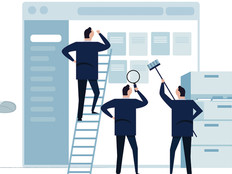Without Understanding AI, Graduates Risk Becoming Unemployable
Frankly, schools that do not integrate AI into the K–12 curriculum could be exacerbating the digital divide, especially for traditionally disadvantaged groups. The recent National Educational Technology Plan noted that one of the three digital divides in K–12 is the digital use divide, which describes the opportunities students have to use technology to further their learning.
According to the Office of Educational Technology’s release on the plan, this includes “dynamic applications of technology to explore, create and engage in critical analysis of academic content and knowledge.” What this means is that while students may have access to devices and other technology, they may only be using it to passively consume content instead of using it as a tool for creation.
No matter how many new technologies crop up that allow students to learn on their own, teachers remain subject matter experts and can still serve as a guide to help guide students. Such is the case with AI exploration. Unfortunately, students who get few or no opportunities to explore this new technology risk falling behind in the new economy, threatening their ability to secure AI-supported employment.
LEARN MORE: Check out new AI guidance from the Department of Education.
How Embracing AI Can Improve Critical Thinking in K–12
For those educators who worry that AI will negatively impact learning, it might help to think of it more as a resource that students can use to expand their efficiency and capacity. In the pre-internet era, students seeking to better understand a subject matter would go to libraries and hunt through physical encyclopedias for information. Today, students can do the same with generative AI. Much more powerful and efficient than legacy forms of information-gathering, AI can quickly collect and summarize data from across the web and present it in an easy-to-digest format.
What this means is that educators and librarians still have a job to do. They must understand AI in order to help students properly vet these sources. This is, in fact, not unlike how students learned to evaluate and cite references before generative AI became publicly available. This has also been part of the digital literacy wave that’s washed over K–12. As students are bombarded by millions of pieces of information everywhere they turn — from social media to traditional print and broadcast sources — more schools are implementing a digital citizenship curriculum to help students think critically and question more deeply the flood of information and disinformation that they face each day. When students produce projects informed by subject matter experts, websites or books, we ask them to properly cite their sources. Educators must teach them how to do the same thing with ChatGPT or other forms of AI. In fact, professional style guides such as MLA and APA already include entries on how to correctly cite generative AI.








![[title]Connect IT: Bridging the Gap Between Education and Technology](http://www.edtechmagazine.com/k12/sites/default/files/articles/2014/05/connectit.jpg)




